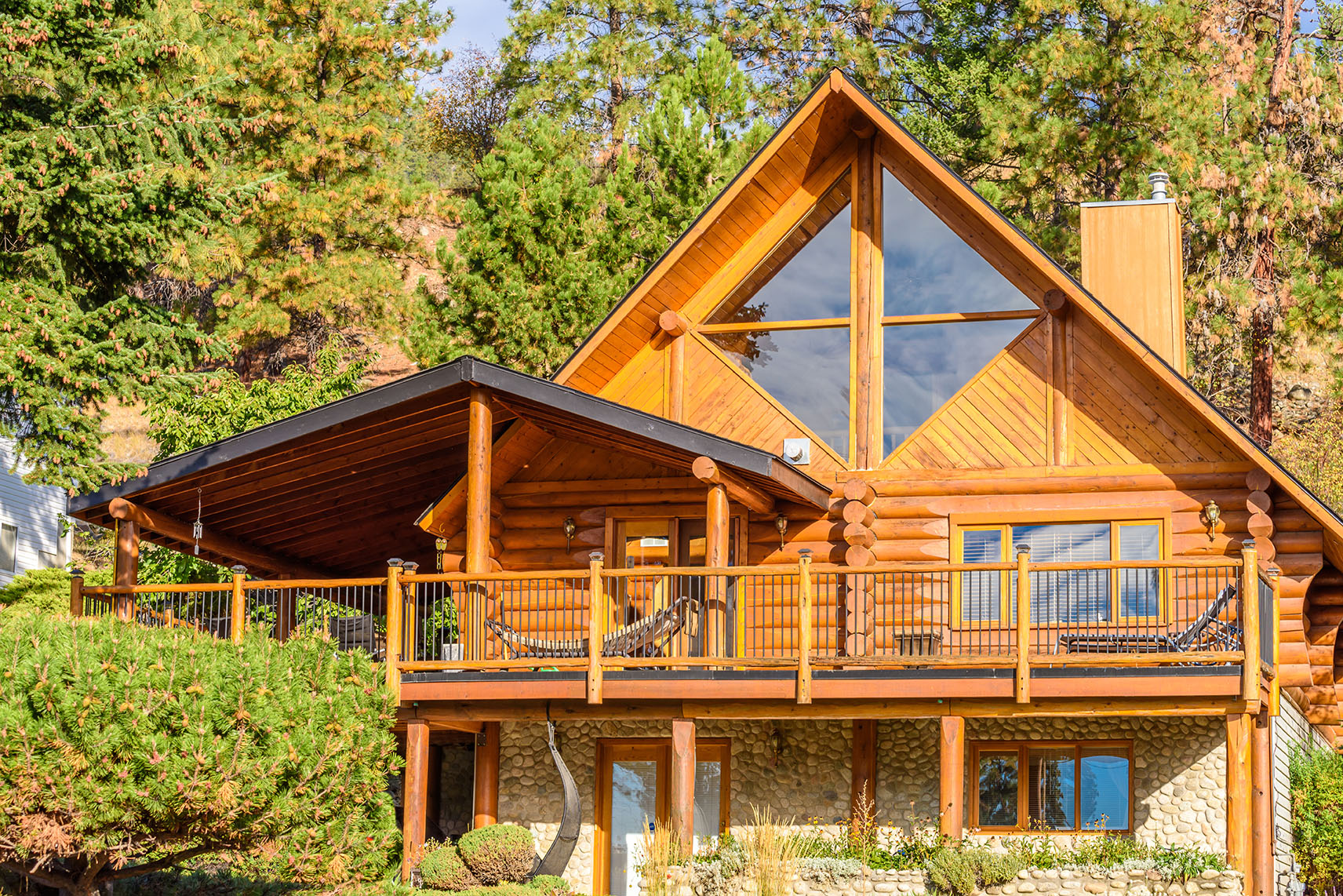Build a Log Cabin Faster and Easier with Log Siding

How many times have you thought about building a log cabin but talked yourself out of it? Have you given any thought to building one with log siding instead of full logs or timber frames? Once you see how easy it is to construct a log siding cabin and the money you can save, you may change your mind.
The ideal wood for a log siding cabin is northern pine also called Norwegian pine. It is a sustainable product because it is milled from trees grown on tree farms. As long as there are well-managed tree farms, there will be wood for future generations to enjoy. Real pine wood log siding has its advantages, and let’s explore them.
A Log Siding Cabin Simulates Full Logs at Lower Cost
Pine log siding is available in three profiles called quarter log, half log, and premier log. Each profile is part of a log milled in a D-shape from end to end. Your choices include:
- Unfinished and pre-finished conditions
- Smooth and hand-hewn surfaces
- Quarter Log comes in 2x6 and 2x8 sizes
- Half Log is available in 3x6 and 3x8 sizes
- Premier Log comes in 3x8 and 3x10 sizes
Once installed on conventional wall framing, the cabin looks like full logs without the full log price. You save money on building materials, labor, and equipment used in construction. These benefits should provide enough incentive to build your cabin with log siding.
A Log Siding Cabin Goes Up Faster and Easier Than Full Logs
 The national average time to build a conventional home is 8.1 months while the time to build a full log home varies from 10 to 25 months. A cabin is typically thought of as a smaller structure than a log home so you can subtract a few weeks to one or two months. Here’s the difference:
The national average time to build a conventional home is 8.1 months while the time to build a full log home varies from 10 to 25 months. A cabin is typically thought of as a smaller structure than a log home so you can subtract a few weeks to one or two months. Here’s the difference:
- Pine log siding is secured to conventional wall framing with galvanized screws. A carpenter, contractor, or homeowner with the skills can do the job.
- The siding is more readily available and easier to handle than full logs that are heavy to lift and stack. The tongue and groove with end-matching design makes tight joints.
- Conventional home builders are easier to schedule than specialized full log home contractors. You typically get started and finish faster with their work.
“The ideal wood for a log siding cabin is northern pine also called Norwegian pine. It is a sustainable product because it is milled from trees grown on tree farms.”
Choose Among Several Corner Systems
Constructing a log siding cabin is similar to building a conventional home with a few changes. First, the log corner system is installed followed by log trim around the windows and doors. The siding is installed last to the OSB board on the exterior wall framing and directly to the interior wall framing. Four favorite types of corners include:
- Butt-n-Pass D-Style
- Double D-Style
- Vertical Log
- Saddle Notch
Each is available in sizes to match the log siding profile you choose. Caulking is used around corners, doors, and windows to seal against air leaks. You may also elect to chink around the corners and joints and between the log siding for a pioneer look.
Log Trim for Doors and Windows
 After the log corner system has been installed, it’s time to attach log trim around the doors, windows, and anything else that needs it on the exterior. Exterior trim sizes match their corresponding log siding profiles, including:
After the log corner system has been installed, it’s time to attach log trim around the doors, windows, and anything else that needs it on the exterior. Exterior trim sizes match their corresponding log siding profiles, including:
- Quarter Log needs 2x6 or 3x4 log trims
- Half Log needs 3x6 or 4x4 log trims
- Premier Log needs 4x4 or 4x6 log trims
- Hand-Hewn trim is also available
Once the trim is installed, the siding is butted flush up against it. Finish the installation with a thin bead of caulk for energy efficiency. The 2x6 D trim is also used on the interior of cabins as casing or baseboard over drywall. Custom trims can be ordered in larger sizes for specialized applications and spaces.
Other Complementary Items for a Log Siding Cabin
Your log siding cabin can be adorned with other pine wood options that range from pioneer to modern styles. Structural and aesthetic choices are available for the interior and exterior.
- Flooring and decking made with tongue and groove planks
- Half log mantels for fireplaces and behind wood-burning stoves
- Peeled posts for supports and entryways
- Beams and trusses placed in high ceilings
- Interior doors made from beautiful pine
- Log railings for the interior and exterior porches
- Log stairways and steps for second floors and basements
Kitchen and bathroom cabinetry made from pine add a finished touch to any log cabin. Choose from a variety of rustic to modern styles to meet your décor needs. All these additions help make your log siding cabin complete. The advantages of building with real wood log siding should help with your decision to move forward with your cabin construction.
 Store Location
Store Location







